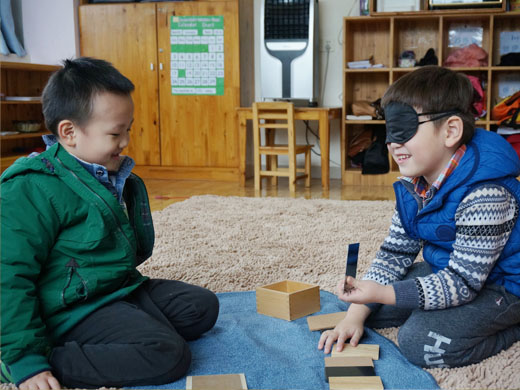The Sensorial area of a Montessori classroom helps refine the young children’s senses so that they may form connections with the world around them.
Auditory and sound lessons, like the Sound Cylinders, utilize a child’s hearing to associate with the environment and to refine the perception of musical pitch.
Olfactory and smell lessons refine the sense of smell and give the child another means of association with the environment. The tools used for this process are the Smelling Bottles. The teacher will switch the substances in the bottles often to give the child chances to explore a multiple range of smells.
Tactile and touch lessons utilize the child’s hands and fingertips to discover different textures and gradations of rough and smooth. Their indirect purpose is to prepare the child for writing through practice of lightness of touch, which is the hand control needed for holding and using a pencil.
Included amongst these materials are the Rough and Smooth Boards. The child will later encounter a similar material when tracing sandpaper letters in the Language area, and sandpaper numbers in the Math area.
In addition, the Sensorial area serves as indirect preparation for the child’s future learning in the Math area through the repetition of activities such as knobbed cylinders, which re-enforce order, sequence and organization. These skills are essential in order for the child to have a deep understanding of the sequence and relationship of numbers, which they will learn in the Math area.


 International Sunshine Home Arts & Sciences
International Sunshine Home Arts & Sciences